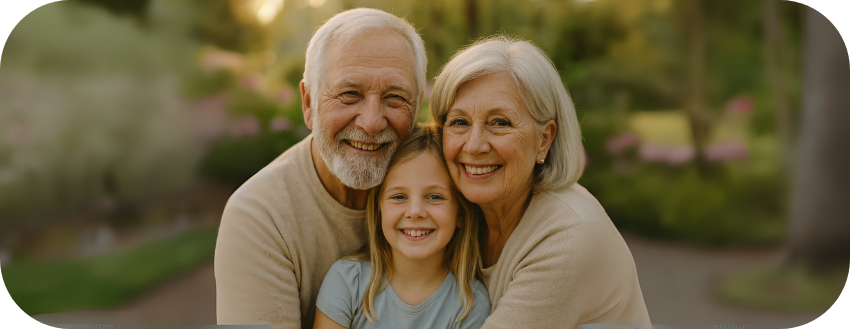Loneliness and Social Isolation in Seniors – Stay Connected
Growing older often brings wisdom, calm, and stories worth sharing but it can also bring profound feelings of loneliness and isolation.
Updated on: 05 Aug 2025

As children, we often worry about our aging parents about their health, finances, and happiness. One of the less obvious but deeply felt challenges seniors face is social isolation and loneliness. Over time, loss of mobility, shrinking social circles, changes in routine, or health challenges can leave your parent feeling cut off from the world, even if they’re not physically alone.
The good news: there are things you can do, even from a distance, to help them feel more connected, supported, and valued. In this post, I share 10 simple and practical ways to help your aging parent feel less isolated, grounded in both empathy and research.
Social isolation” refers to having few social contacts (an objective measure), while “loneliness” is the feeling of being disconnected (a subjective experience). Both are serious issues, with the WHO noting that about 1 in 4 older adults experience social isolation, and nearly 28% report loneliness in high-income countries (WHO, 2021 , Fakoya et al., 2020).
It sounds basic, but consistency matters more than grand gestures. Set a schedule — daily call, or every other day text or voice message. But make those interactions meaningful:
Frequent, meaningful contact builds trust, lets them feel remembered, and gives you chances to notice how they’re really doing. Research shows scheduled social contact is one of the most effective ways to reduce loneliness in older adults (JAMA Network Open, 2023).

Being part of a group whether small or large gives purpose, belonging, and routine.
Searched revealed that group-based social activities are often more effective than one-on-one solutions for combating loneliness (Fakoya et al., 2020). Evidence shows tech-based programs can reduce loneliness when paired with proper support (Frontiers in Public Health, 2024).
Encourage your parent to revisit or discover passions: gardening, crafts, music, or reading. Provide tools, resources, or connect them to interest-based clubs. This keeps them engaged and gives you conversation starters.
Family bonds are powerful medicine.
Research shows intergenerational contact strengthens social ties and combats loneliness (ScienceDirect, 2021).

Many older adults resist technology, but when introduced gently, it can be life-changing.
During COVID-19, technology became a lifeline for many older adults, especially those in rural areas who faced even greater barriers to connection (BMC Geriatrics, 2023). Evidence shows tech-based
Small gestures, repeated over time, build emotional closeness:
Isolation often has physical causes: mobility issues, transport, or fear of falling. You can help by:
Consistent social contact even via “befriending” programs can reduce feelings of isolation (BMC Public Health, 2020).
If feasible, pets or plants provide companionship and purpose.
Animal-assisted interventions and even simple plant care can improve mood and reduce loneliness (JAMA Network Open, 2023).

Sometimes the best gift is listening. Many older adults hesitate to admit loneliness, fearing stigma.
The success of interventions often depends on active involvement of the older adult in planning and reflection (Fakoya et al., 2020).
Loneliness is not just “emotional” it can affect physical health, cognition, mood, and mortality (sprc.org). If your parent has chronic health conditions or signs of depression, anxiety, or cognitive decline, get professional help:
By combining personal support and professional help, you provide a layered safety net.
Understanding the stakes can motivate sustained effort. Prolonged loneliness and social isolation in older adults are linked to:
That means what may seem like a “soft” emotional issue is in fact a major public health concern.
| Day | Action | Purpose |
| Monday | 15-minute video call, ask about a memory from youth | Reconnect emotionally |
| Tuesday | Send a photo or short music clip | Micro-moment of joy |
| Wednesday | Help them attend (or log in to) a virtual or local club | Social engagement |
| Thursday | Share a short article or podcast on their interest | Intellectual stimulation & conversation starter |
| Friday | Invite a family member or neighbor to drop by | Face-to-face contact |
| Saturday | Help with transport and plan outing (church, park, café) | Breaks monotony |
| Sunday | Reflective conversation: what small wins or worries did they feel? | Emotional check-in |
Your aging parent doesn’t have to feel forgotten or disconnected. While the challenges of mobility, health, distance, and changing social networks are real, consistent empathy, small acts, and bridging strategies can make a profound difference. By combining regular contact, community engagement, technology as a tool (not a burden), meaningful shared interests, and professional support when needed, you can help your parent reclaim a sense of connection, purpose, and belonging.

In today’s hyperconnected world, many older adults still experience an invisible silence loneliness. Despite the abundance of digital tools, emotional isolation continues to rise, especially among seniors.
Updated on: 24 Jul 2025